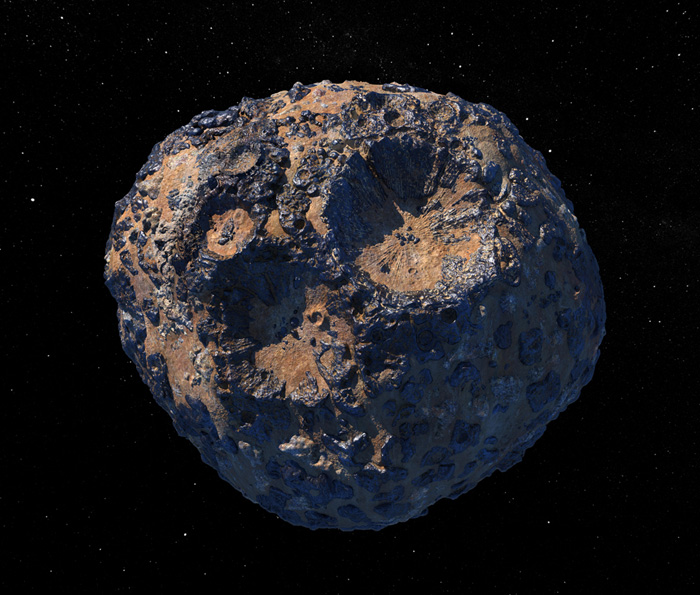
NASA tracks asteroid that can kill 13 m people if it hits earth
Sopuruchi Onwuka, with agency reports
An asteroid that roams freely in the space is now a potential danger to over 13 million people as it flies past the earth this Friday at an alarming speed.

The fast speeding asteroid moving at the rate of 11 miles per second will zoom past the earth Friday, forcing the National Aeronautics and Space Administration (NASA) to notify the world of the potential hazards of its veering off course.
NASA stated in a release that the Asteroid 2008 OS7, the size of a football pitch, is classified as “potentially hazardous” and is expected to come within 1.7 million miles of Earth – about seven times further out than the Moon – at a speed of around 11 miles per second.
The astroid is deemed potentially hazardous because it comes reasonably close to Earth, and could cause significant damage in the event of an impact.
Asteroid 2008 OS7, which flies past Earth every 962 days, is close enough in space terms for NASA to add it to its “asteroid watch”, and experts will be keeping a close eye on its approach.
It is estimated that a strike by an asteroid 1,500 feet in diameter landing on a city would cause a crater 11 miles wide, instantly vaporising over 2 million people. The impact would be the equivalent of 141 gigatons of TNT, and the fireball released would kill a further 11 million people.
A research fellow in the University of Warwick’s physics department, Dr Minjae Kim, said: “We don’t need to worry about it too much as this asteroid will not enter Earth’s atmosphere, while it will still approach close to the Earth.
“There are millions of asteroids in our solar system, of which around 2,350 asteroids have been classified as potentially hazardous.
“One of the most intriguing aspects of the 2008 OS7 is its estimated diameter based on its luminosity and reflective properties, which ranges from 725ft to 1,622ft.
“This places it in the category of a small to moderately sized asteroid, roughly equivalent to the size of a football field.”
Asteroid Dinkinesh, which passed near Earth on Wednesday, is pictured in a photograph taken by the Lucy spacecraft
Asteroid Dinkinesh, which passed near Earth on Wednesday, is pictured in a photograph taken by the Lucy spacecraft – NASA/GODDARD/SWRI/JOHNS HOPKINS APL/NOIRLAB
Asteroid risk and monitoring is carried out by the Center for Near Earth Object Studies at Nasa’s Jet Propulsion Laboratory.
Most asteroids and comets have orbits that do not bring them very close to Earth, and they are only classed as dangerous if they come within 4.6 million miles and are larger than 460 feet.
The next significant approach to Earth by a potentially hazardous asteroid will be by 99942 Apophis on April 14, 2029.
Nasa’s Osiris-Apex spacecraft is currently headed to the asteroid to study the physical changes that will result from its close encounter with Earth.
Apophis was also predicted to get dangerously close to Earth in 2068, but experts have since revised their calculations and no longer see it as a risk.
In total, five objects will pass close to the Earth between now and Friday, with the other four varying between 63ft and 120ft in diameter.
The asteroid coming closest is 2024BJ3, which is approximately the size of an aeroplane, and will come within 533,000 miles on Friday. All are too faint to be seen with the naked eye.
Nasa is taking the threat from space rocks seriously and in 2022 carried out the first asteroid deflection test, proving it could alter the orbit of the small moonlet Dimorphos.
It also sent a mission to the asteroid Bennu, which could hit Earth in 2182 with the force of 22 atom bombs.
Although the odds of a catastrophic strike are 1 in 2,700, Nasa was concerned enough to launch a spacecraft to Bennu seven years ago to collect samples, in case an Armageddon-style deflection mission is required.
The samples from the mission are now being studied by experts across the globe, including the Natural History Museum in London.
Broaden your horizons with award-winning British journalism. Try The Telegraph free for 1 month, then enjoy 1 year for just $9 with our US-exclusive offer.



